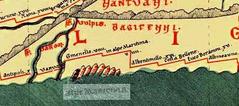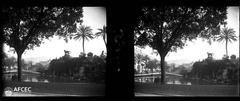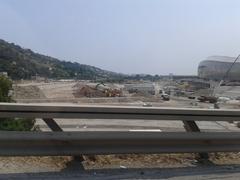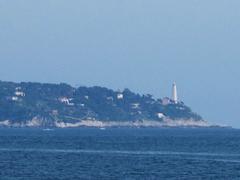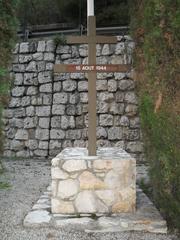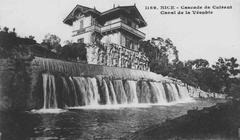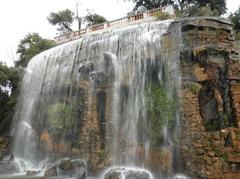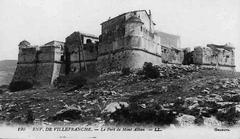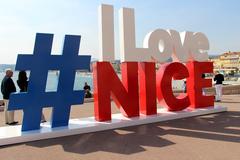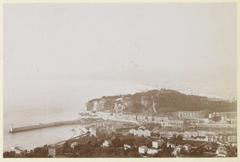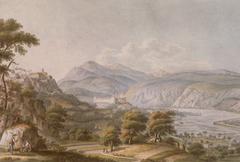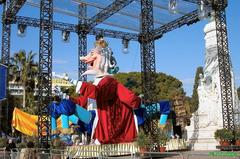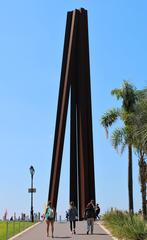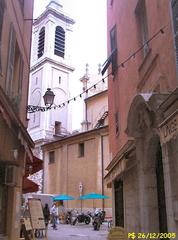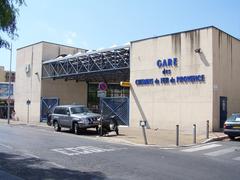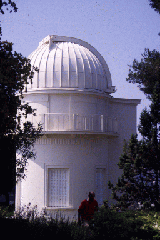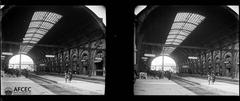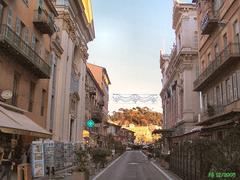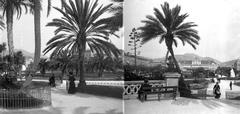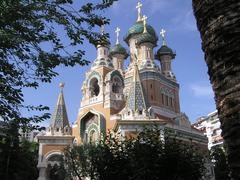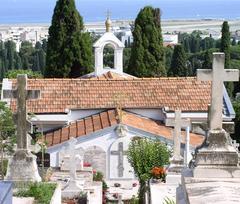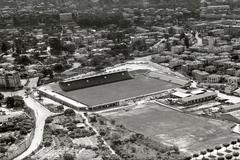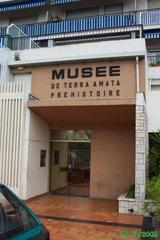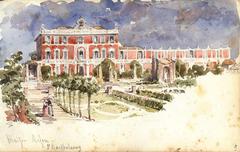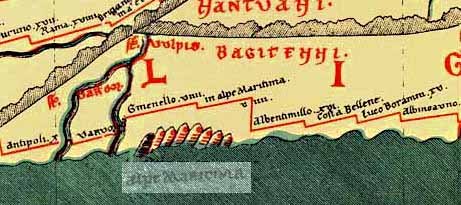
Visiting the Jardin des Arènes de Cimiez: Hours, Tickets, and History
Date: 18/07/2024
Introduction
This comprehensive guide will delve into the garden’s rich history, key attractions, visitor information, and travel tips. Whether you’re planning a visit or simply curious about this unique site, this article will provide all the information you need to fully appreciate the Jardin des Arènes de Cimiez.
Table of Contents
- Introduction
- Historical Background and Cultural Significance
- Key Attractions and Notable Features
- Visitor Information
- Special Events and Guided Tours
- Conclusion
- FAQ
- Call to Action
Historical Background and Cultural Significance
Roman Roots
The Jardin des Arènes de Cimiez, nestled on Cimiez hill in Nice, France, offers more than just a peaceful escape from the bustling city below. It carries within its grounds a rich history dating back to the Roman era. The garden’s name, “Arènes de Cimiez,” translates to “Arenas of Cimiez,” hinting at its ancient past.
This area was once the site of Cemenelum, a thriving Roman settlement established in the 1st century AD. Cemenelum served as a significant urban center for the Roman province of Alpes Maritimae. The remains of this ancient city, including the amphitheater and baths, are now carefully preserved within the garden, offering a tangible link to a bygone era.
The Amphitheater
The most prominent historical feature within the Jardin des Arènes de Cimiez is undoubtedly the Roman amphitheater. Built in the 2nd century AD, this elliptical arena could accommodate up to 5,000 spectators. Here, gladiatorial combats, chariot races, and other public spectacles entertained the Roman populace.
Unlike some amphitheaters used for staged animal hunts (venationes), the arena at Cemenelum shows no evidence of a hypogeum, a complex system of underground tunnels and cages used to house and release animals. This suggests a focus on gladiatorial combat and other performances involving human participants.
Over the centuries, the amphitheater fell into disrepair and was gradually buried. It was only in the late 19th century that excavations began, revealing the impressive structure once again. Today, the amphitheater stands as a testament to the grandeur of Roman architecture and entertainment. It also serves as a unique venue for open-air concerts and performances, particularly during the annual Nice Jazz Festival.
Beyond the Arena
Adjacent to the amphitheater lie the remnants of the Roman baths. These public baths, essential to Roman social life, provided spaces for hygiene, relaxation, and socializing. While not as well-preserved as the amphitheater, the ruins of the baths offer valuable insights into the daily lives of Cemenelum’s inhabitants.
The Musée Archéologique de Nice-Cimiez, located within the garden, further enriches the historical experience. This museum houses a fascinating collection of artifacts unearthed from the Cemenelum site. Visitors can discover mosaics, pottery, tools, jewelry, and other objects that shed light on various aspects of Roman life, from domestic routines to religious practices.
From Monastery to Museum
Following the decline of the Roman Empire, Cimiez hill continued to hold cultural and religious significance. In the 9th century, Benedictine monks established a monastery on the hill, drawn by its tranquility and panoramic views. The monastery thrived for centuries, becoming a center of learning and religious life.
During the 16th century, the monastery was taken over by Franciscan friars. They constructed a church and cemetery on the site, further shaping the landscape and character of Cimiez hill. The Franciscan presence continues to this day, with the Monastère de Cimiez still standing as a place of worship and reflection.
The 19th century saw a renewed interest in Nice’s Roman heritage. Archaeological excavations at Cimiez, coupled with the city’s growing popularity as a tourist destination, led to the creation of the Jardin des Arènes de Cimiez. The garden was designed to showcase the Roman ruins while providing a picturesque setting for locals and visitors alike.
Key Attractions and Notable Features
Roman Amphitheater
A testament to Nice’s Roman past, the Arènes de Cimiez stands as a prominent feature within the garden. Constructed in the late 1st century AD, this ancient amphitheater once hosted gladiatorial combats and chariot races, entertaining up to 5,000 spectators. Today, it serves as a venue for concerts and events, particularly during the annual Nice Jazz Festival. Visitors can explore the remnants of the arena’s structure, including the seating tiers, stage area, and underground passages, imagining the grandeur of its former days.
Archaeological Museum of Nice-Cimiez
Adjacent to the amphitheater lies the Musée Archéologique de Nice-Cimiez, a museum dedicated to the Roman heritage of the region. The museum houses a rich collection of artifacts unearthed from the Cimiez site and other nearby Roman settlements. Visitors can delve into the daily life, rituals, and artistry of the ancient Romans through mosaics, ceramics, tools, jewelry, and architectural fragments. The museum also provides insights into the history of Cemenelum, the Roman settlement that once thrived on Cimiez hill.
Monastery of Cimiez
A short stroll through the garden leads to the Monastère de Cimiez, a Franciscan monastery established in the 16th century. The monastery’s serene atmosphere and beautiful architecture offer a peaceful respite. Visitors can admire the 17th-century church adorned with Baroque decorations and housing three renowned works by the Italian painter, Bréa. The monastery also features a small museum showcasing religious art and artifacts, including a captivating collection of nativity scenes from around the world.
Matisse Museum
Just across from the Franciscan monastery, art enthusiasts can immerse themselves in the world of Henri Matisse at the Musée Matisse. Housed in a 17th-century Genoese villa, the museum showcases a comprehensive collection of the artist’s works, spanning paintings, sculptures, drawings, and cut-outs. Visitors can trace Matisse’s artistic evolution and gain a deeper understanding of his vibrant use of color and form. The museum’s setting within the olive grove further enhances the experience, offering glimpses of the landscape that inspired Matisse.
The Gardens Themselves
Beyond the historical and cultural attractions, the Jardin des Arènes de Cimiez itself is a delight to explore. The garden’s design seamlessly blends Roman ruins with lush greenery, creating a unique and captivating atmosphere. Visitors can wander through shaded alleys lined with cypress and olive trees, enjoying the tranquility and picturesque views. The garden also features vibrant flowerbeds, fountains, and sculptures, adding to its visual appeal.
Panoramic Views
Perched atop Cimiez hill, the Jardin des Arènes de Cimiez offers breathtaking panoramic views of Nice and its surroundings. Visitors can admire the cityscape stretching towards the Mediterranean Sea, with the Promenade des Anglais tracing the coastline. The garden’s elevated position provides a unique perspective of Nice, showcasing its architectural beauty and natural splendor.
Visitor Information
Visiting Hours
The Jardin des Arènes de Cimiez is open daily from 9:00 AM to 6:00 PM. However, hours may vary seasonally, so it is advisable to check the official website or local tourist information for the most up-to-date schedule.
Tickets and Admission
Admission to the garden is free, making it an accessible destination for all visitors. The Musée Archéologique de Nice-Cimiez within the garden has a separate entrance fee, typically around €10 for adults, with discounts for students, seniors, and group bookings.
Accessibility
The garden is generally accessible to visitors with mobility issues, with paved paths and ramps available. However, some areas, particularly around the ruins, may be uneven or have limited access. It’s recommended to wear comfortable shoes and be prepared for some walking.
Travel Tips
- How to Get There: The garden is easily reachable by public transport. Take bus line 5, 33, or 22 to the ‘Arènes / Monastère’ stop. Alternatively, a short taxi ride from Nice city center will get you there.
- Best Time to Visit: Spring and autumn are ideal times to visit, offering pleasant weather and fewer crowds. The summer months can be hot, but the garden’s shaded areas provide relief.
Special Events and Guided Tours
The Jardin des Arènes de Cimiez hosts various events throughout the year, including the renowned Nice Jazz Festival. Guided tours are available and provide in-depth insights into the site’s history and significance. Photography enthusiasts will find numerous picturesque spots, from the ancient ruins to the beautifully landscaped gardens.
Conclusion
The Jardin des Arènes de Cimiez stands as a testament to the enduring legacy of history and culture on this site. It offers a unique blend of ancient Roman ruins, medieval monastic architecture, and lush Mediterranean flora. Visitors can stroll through the olive grove, admire the rose garden, or simply relax in the shade of ancient trees, all while absorbing the palpable sense of history that permeates the air.
The garden’s cultural significance extends beyond its historical remnants. It serves as a vibrant community space, hosting events, concerts, and exhibitions throughout the year. The annual Nice Jazz Festival, held partly within the Roman amphitheater, draws international crowds and adds a contemporary layer to the garden’s already rich tapestry of cultural expression.
Whether seeking historical insights, artistic inspiration, or simply a moment of tranquility, the Jardin des Arènes de Cimiez offers a captivating experience for all who visit.
FAQ
Q: What are the Jardin des Arènes de Cimiez visiting hours?
A: The garden is open daily from 9:00 AM to 6:00 PM, but hours may vary seasonally.
Q: Do I need to purchase tickets to enter the Jardin des Arènes de Cimiez?
A: Admission to the garden is free. However, there is an entrance fee for the Musée Archéologique de Nice-Cimiez.
Q: Is the Jardin des Arènes de Cimiez accessible for visitors with mobility issues?
A: Yes, the garden has paved paths and ramps, but some areas around the ruins may have limited access.
Q: How can I get to the Jardin des Arènes de Cimiez?
A: The garden is accessible by bus lines 5, 33, or 22 to the ‘Arènes / Monastère’ stop, or a short taxi ride from Nice city center.
Q: What special events take place at the Jardin des Arènes de Cimiez?
A: The garden hosts various events throughout the year, including the Nice Jazz Festival and guided tours.
Call to Action
For more information on visiting the Jardin des Arènes de Cimiez and other historical sites in Nice, download the Audiala mobile app, check out our related posts, and follow us on social media for the latest updates and travel tips.
